SEARCH






|
|
|
|


by Editor Lourens Durand
Edited and published by Yvette Depaepe, the 15th of May 2024
'Potatoes' by Bill Gekas
Right at the beginning of photography, George Eastman struggled with wet gelatine plates used at the time in the cumbersome process of taking photographs, until he found a way of producing dry plates in numbers and started up a small factory producing these plates. The venture attracted a businessman, Henry A. Strong, who invested in the emergent business. Together, the two gentlemen started up the Eastman Dry Plate Company and eventually, in 1892, the Eastman Kodak Company was formed. In the interim, however, Eastman replaced the cumbersome dry plates with roll film, to be used in his new Kodak camera, and the rest (as they say) is history.
One of George Eastman’s most famous quotes is:
“Light makes photography. Embrace light. Admire it. Love it. But above all, know light. Know it for all you are worth, and you will know the key to photography.”
Great words, but there are obviously several kinds of light. In this article, I will attempt to address the variety and quality of light, as well as the diverse ways it can be used in photography.
- Hard light
- Soft Light
- Natural light
- Artificial light
HARD LIGHT is when a relatively small, focussed light source is pointed at a subject, especially from close by, creating sharp, harsh shadows with no gradation of light in the shadow area. This kind of lighting is often employed where stark contrasts are sought in a photo to convey a message of harshness.
SOFT LIGHT is when a large, diffused light is placed quite close to the subject to create smooth, gentle graduations of light and shade and a much more mellow, dreamy effect, shaping the subject and creating mood. Interestingly, when a soft light source is moved further away from the subject it becomes less soft, so placing is important.
NATURAL LIGHT
The sun, although celestially a huge body of matter, appears as a relatively small light source in a huge sky, resulting in particularly hard light if trying to photograph in full sunlight. Also causes your model's eyes to scrunch up or squint when posing in full sunlight. A way out is to move the subject into the shade and lighten it by using a large reflector to soften the light.
Soft light can also be emulated outdoors, even on a sunny day, by using a scrim (a piece of fabric, mesh, or netting stretched over a frame) held up between the sun and the subject. The scrim, by the way, can be fairly small or huge as, for example, in an outdoor shot of a new Lamborghini.
Even when shooting indoors you can find natural light, through a window or open doors. Natural window light can be either soft or hard, depending on subject placement and whether a lace curtain is covering the window or not.
ARTIFICIAL LIGHT
The studio photographer, whether shooting portraits, still life, or product photography, is faced with an extremely wide range of lighting types and configurations.
Let’s have a look at some of them:
Open flash heads give a particularly hard light spread over a large area. They can be fitted with a reflector, which would normally narrow down the light down to 90°, but still a hard light. Another common adaptor used on a flash head is a snoot, which is a conical contraption fitted to the flash, narrowing the beam down to highlight small areas. It is often used in portraiture from behind the subject as a rim light to highlight the hair. In still life and product photography the snoot would assist in preferentially highlighting areas of special interest, such as a bottle label.
Soft-boxes are light modifiers that give an exceptionally soft light and diffuse shadows. A soft-box is normally a square or oblong structure, 60cm or larger on the edge, with one or two layers of diffusion material in front of the light source and reflective sides internally that help to give a fair amount of directionality. It is often the go-to lighting for photographers and is widely used. On the downside, when used in portraiture, the catchlights in the model’s eyes are square or oblong, which can be a problem for some.
Strip-lights are longer, thinner versions of a soft-box allowing the photographer to light the full body of a standing model. They are also used for special effects in other genres of photography.
Octa-boxes are similar to soft-boxes but have eight sides and are somewhat larger. Because of their size, octa-boxes can produce a really soft light. They are generally foldable and can be set up quicker than a soft-box. Their other advantage is that the catchlights in the eyes of the model are round. Outside of portraiture, there is not really any advantage over soft-boxes.
Umbrellas are more portable and more easily assembled than soft-boxes, which can be a benefit when travelling off-site. The white umbrellas can be used either as shoot-through or reflective light sources. When using a shoot-through approach, the umbrella can be positioned quite close to the model, giving a nice soft light (although not as soft as a soft-box). If used as a reflective light source, the umbrella is turned around and the light source is facing away from the model and at a greater distance, resulting in some light fall-off. One does get umbrellas that are silvered on the outside, and this reduces the fall-off somewhat. The catchlight in the eyes of the model is round (compared to that when using a soft-box), but the reflected shafts of the umbrella are not that attractive.
Beauty Dishes give a different look to soft-boxes. They are designed for use at close distances and yield a special, focused light that has a unique, subtle wrapping effect that shapes the model’s face in a way different from that of soft-boxes. The beauty dish has a bowl shape, with a small reflector centred in the front, facing the light source. This reflector bounces the light from the light source back onto the bowl, which then bounces the light back outwards onto the model.
Flags and reflectors are not really light sources but are useful in blocking off light on selective areas, such as when avoiding glare off glassware or brass ornaments in still-life setups, or on reflecting additional light into darker shadows on the subject. They can be large or small black cardboard sheets in the case of flags, or white Styrofoam sheets, white cards, or aluminium foil used as reflectors.
STUDIO PORTRAITURE LIGHTING SETUPS
There are obviously an infinite number of ways that these individual lights and combinations can be used in a studio setup, but here are some of the more common, tried and tested setups, all relying on positioning of the light sources relative to the model.
Split Lighting - This lighting scheme results in a small, soft shadow of the subject’s nose on the cheek. The model typically stands or sits with his or her body slightly turned away to the photographer’s right. A single light source is placed in line with, or slightly behind the model, on the left side, and its intensity adjusted to give the desired exposure. The camera itself would be set on ISO125, 1/120 sec shutter speed, and exposure at F/11 or so as a start. In some cases, it may add an extra bit of zip if a snoot is placed behind the model, on the opposite side of the main light.
Rembrandt Lighting – Rembrandt light is so called because it was extensively used as natural lighting by Rembrandt in his portraits, including his self-portrait, and is quite dramatic (the effect is said to be due to the shape of his studio, with a window as the only light source, high up on the left-hand side of the artist). The effect is typified by a small triangle of light on the subject’s cheek on the shadow side. The eye on the shadow side must have some light, or else the picture looks unbalanced. The main light is to the left of the photographer, slightly more forward than with split lighting, and also higher up so that the shadow of the nose falls down the cheek. It is a good idea to have a reflector on the opposite side of the light, or maybe even a fill light at low intensity slightly to the photographer’s right. The purists say that the triangle of light should be no longer than the nose and no wider than the eye.
Loop Lighting – Loop lighting is very similar to Rembrandt light, except that the main light is moved slightly backward (towards the photographer) to a 45-degree angle with the model, which results in the shadow of the nose forming a slight loop below and to one side of the nose.
Butterfly Lighting – Here the main light source is directly above the subject so that the photographer is shooting almost underneath the light source, resulting in a butterfly-shaped shadow below the nose. This lighting setup is frequently used in glamour shots, because it is quite flattering, and works particularly well with a Beauty Dish.
Clamshell Lighting – Similar to Butterfly Lighting, except that a large reflector is placed below the subject and facing upwards, helping to soften the shadows under the chin, nose, and eyes.
In conclusion, I hope that this article goes some way in helping to understand the quality of light, the variety of equipment available, and how to use it creatively in progressing in the art of photography, as exemplified in the following selection of photos from 1X.com photographers.
'Mahya' by Ali Shahraki
'Floral' by Q liu
Untitled by Katsuhiro Kojima
'Katya' by Valeriy Kasmasov
'Brothers' by deskounlmtd
'Bo' by Lifeware
'Autumnus' by Bill Gekas
'Midnight Story' by Alfredo Yañez
Elderly smoker' by Sergio Pandolfini
'Abah' by Andi Halil
'Portrait' by JAE
'hair wash day' by kenp
'HER WORLD....' by Tjipto Suparto
'Oksana' by Zachar Rise
'PossessioN' by Emerald Wake
* by Robert Maschke
Untitled by Robert Becke
'Sylwia' by Jaroslaw Saternus
Pears' by Bill Gekas
 | Write |
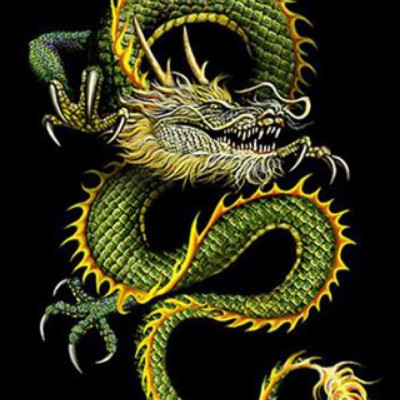 | Francisco Goncalves PRO Excellent Portraits. Yes, Light is the key... Light and shadows work like a marriage. |
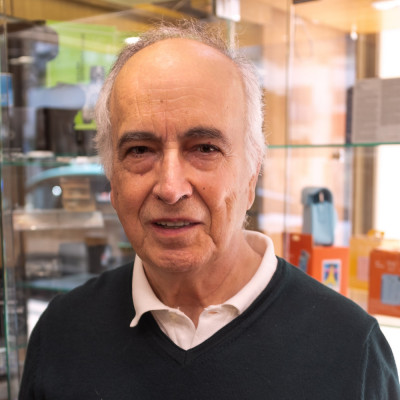 | Jorge Ribeiro Lume PRO Obrigado |
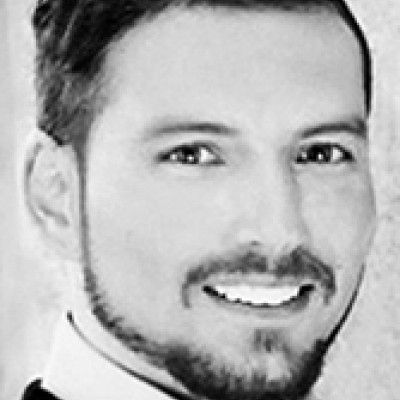 | Vasil Nanev PRO Brilliant and very interesting article, thank you so much! |
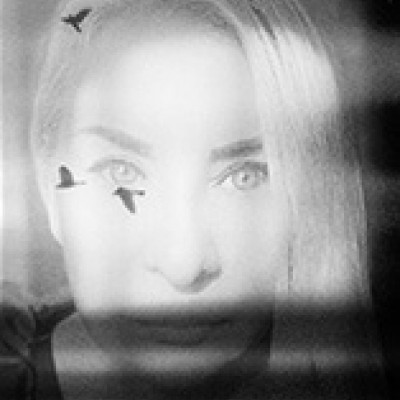 | Gabriela Pantu PRO Great article and wonderful pictures! Congratulations and thank you for sharing! <3 |
 | Katsuhiro Kojima PRO Thank you for sharing a pic. |
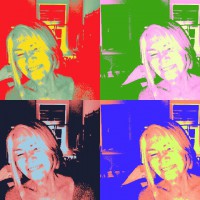 | Jane Lyons PRO Thank you for such a complete and informative article on light and for the great photography to illustrate it. |
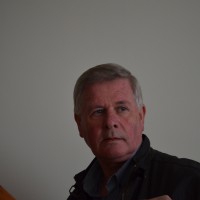 | Ray Clark PRO Brilliant article and great models. |
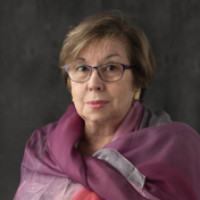 | Asuncion Salmeron PRO It's been a while since I've seen such an interesting and instructive topic on the page. It is a complete compendium on photography. Beautiful and good photos chosen for the topic. Many thanks to the editor Lourens Durand,
Warm greetings. |
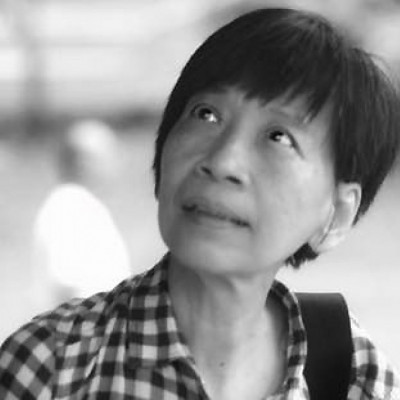 | Pang Teng Lin PRO Beautiful work . Thank you for sharing |
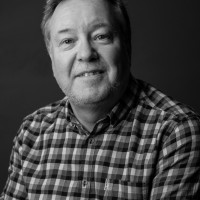 | Colin Dixon CREW Interesting article on the beauty of light and how it is created and used by us all . Wilh amazing photographs to illustrate. :) |
 | Yvette Depaepe CREW Interesting and fine article, Lourens. Thanks for sharing it with the readers. Cheers, Yvette |
by Yvette Depaepe
Published the 13th of May 2024
Brig Barkow strives to show non-standard thinking works, building attractive compositions, and looking for interesting, unique and unusual images. To him, photography is an important part of his life, a way of self-expression and self-realization. It is both a hobby and a lifestyle at the same time. Come along with me walking through his amazing photographs and learning more about this modest but great artist.
'Geometric still life with balls'
'Fish and violin'
Hello everyone! Brig Barkow is my creative nickname. My real name is Valentin Ivantsov. Photography is my hobby, to which I devote all my free time.
When and how did you start your photographic journey?
I got my first personal camera when I was a student. It was a small format camera with automatic exposure control. From student life to vacations and parties, my camera was always with me. I always have used the possibilities of the Internet to study photography. I have completed several online photography courses. It was very interesting. In addition to that, I read a lot of photography literature, bought books, and looked at various photographs.
'Fallen leaves'
For many of us photography is either a hobby or a way of life. How would you define your relationship with photography?
Photography is an important part of my life, a way of self-expression and self-realization. It is both a hobby and a lifestyle at the same time.
What would be the most important experience so far that has influenced your steps in photography?
I can say that the most significant experience is getting acquainted with the work of the best artists and photographers, and constant self-education. I enjoy watching, reading, creating, solving, and understanding photos.
'Bouquet of mushrooms'
'The hidden bottle'
You have your own style creating exquisite still life photographs but also exclusive surreal portraits. Can you explain why you are so drawn by these totally different categories?
I try and strive to show non-standard thinking, my ability to build a composition, to make it attractive to viewers who are looking for new and interesting images. I try to create something unique and unusual and to see the invisible in the visible. In fact, the portrait genre is the most challenging for me. One must be able to work with people. It's also a responsibility towards the model being photographed. I would like to learn more about portrait photography.
'Outgoing'
'Portrait'
'Where the dream ends'
What is more important to you, the mood,/story behind your images or the technical perfection?
Of course, the mood and the story are more important because they help to convey my emotions and meanings that I want to express and demonstrate through my works.
'Walnut'
What generally is your relationship to your subject matter beyond being an observer? And do you prepare carefully the locations where you are intending to photograph?
It all starts with the subject of shooting.
I'm trying to capture scenes from objects' life. I want to ensure that they begin to exist, sound different in artificially created and imagined conditions. These are things close to us, the life of objects around us...
As for the shooting location, really nothing unusual. It's the light, my table, and the background on which the scenes of my performances are based.
'System'
'Abstract still-life with forks on a colourful background'
Describe your overall photographic vision.
Henri Cartier-Bresson said that in photography it doesn't matter what you shoot, it's important how you do it.
'Still life with reflection'
'Ping-pong, the game is over'
'Still life with grapes and a bee'
Where do you look to find inspiration and what inspires you the most?
Everything that evokes emotions can become a source of inspiration! Nature, paintings, people, poetry, dreams, and more.
'Aquarium'
Many are of the opinion that the gear is not very important when the passion for photography is strong. However, can you please share with us what gear you use (camera, lenses, lighting, tripod, etc.)?
My home studio is a corner in a large room in front of the window. I have the simplest set of studio equipment - four speed-light flashes, two soft-boxes, a reflector, several backgrounds (black, green, white, blue, and gray), and of course, a tripod. I use a Canon EOS 5D Mark III camera and a set of lenses for different shooting conditions. I really enjoy creating different lighting schemes.
'Return'
'Clunker'
What would be your favourite photo? Please tell us the story behind it.
I can't choose a favourite photo. All successful works are my favourites. Each of them contains a part of my effort, my feelings, and my fantasies.
After some time, I look at my works with distrust and suspicion. I'm looking for deception.
Sometimes there is disappointment. Especially after printing selected photographs. You take it in your hands, look at the picture in a completely different way, as if it were someone else's. The colour is not right, the lighting is not enough, or there is overexposure. Although a lot depends on the quality of the printing. But overall, I like everything. And if people like it, that's pure happiness!
'The day is over ...'
'Portrait of a bearded man with a magnifying glass'
Who are your favourite photographers or mentors whose works have influenced you and your photography?
I have always admired classic Dutch still life paintings. I can spend a long time looking at them, as if they are a scene from a play, with its symbolic meanings and the images of the space surrounding objects that we don't see, but we can feel. I also love avant-garde art and everything derived from it. These still life's are completely different in shape, but their content becomes broader thanks to the fantastic imagery and influence of colour. All of this had an impact on my creative activity in some way.
'Loneliness level'
Now, since we have almost reached the end of this interview, I would kindly ask you to share with us your plans or photographic projects you would like to be involved in.
I am currently working on developing new ideas and am always open to new projects.
'Teapot of milk'
Is there anything else you wish to add and what do you think about 1X as a home base for your work?
I am very grateful to the organizers of 1x and to everyone who has noticed my works. Everything here is great and it is a great pleasure to be involved in this wonderful community! Thank you!
'Reading'
'It's going to rain soon'
 |
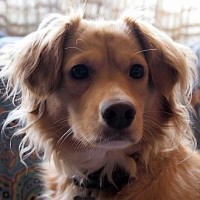 | Izabella Végh PRO Bellissimo articolo. Le fotografie da qualche giorno vedo tutti altro modo (pochi giorni fa mi hanno operato uno dei miei occhi) i colori più brillanti, molto più nitidi. E di queste fotografie i temi sono certe volte bizzarri, insoliti, ma sempre molto sorprendenti, interessanti. Congratulazioni! |
 | Unique work really, very creative and challenging the viewer. Congratulations. |
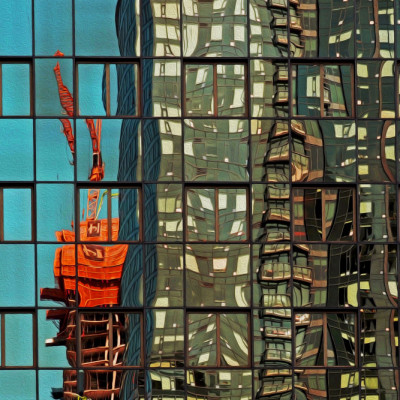 | Bole Kuljic PRO Impressive. Congratulations on your very creative work. |
 | Gabriela Pantu PRO This article is a delight and I thoroughly enjoyed both the thoughts shared and the brilliant images. I love everything - the vision, the thinking out of the box, the technical approach, the way the light works.
Warm congratulations for the way you mirror the world, dear Brig, thank you for sharing, and thank you dear Yvette for always making the Magazine such an inspirational space.
|
"Machines will be capable, within twenty years, of doing any work a man can do.” ~Herbert A. Simon (1965)
In July 2023, I attended in an AI research forum. An Amazon researcher introduced to us several AI projects currently undertaken at Amazon. During the event, we had lunch together. When she learned that I was also a photographer, she bluntly said to me: "Midjourney ended photography!"
Although I cannot agree with this statement, her words present the view of many professionals engaged in the cutting-edge research on generative AI. In this article, from the perspectives of both as an AI scientist and as a professional photographer, I try to thoroughly explore the profound impact that generative AI is having on traditional photography; and how we, as photographers, should face it to this challenge.

“On the mountain”. Generated on Midjourney, by Yan Zhang.
During the summer workshop at the Dartmouth College in 1956, a group of young American computer scienDsts led by John McCarthy (1927-2011) first proposed the term Artificial Intelligence (AI). This summer workshop was later recognized as a landmark historical event that established the field of artificial intelligence.
We know that in 1951, the world's first general-purpose electronic computer UNIVAC I was born in the United States; in 1953, IBM launched the world's first IBM 650 magnetic drum data-processing computer that could perform large-scale computations. It can be said that AI and computer science have almost completely synchronous development histories.

“A programmer 1950s”. Generated on Midjourney, by Yan Zhang.
When talking about AI, people usually point to robots, and those specific hardware or software systems that can perform near-human activities physically, cognitively, or both.
So, what is artificial intelligence in a fundamental sense? In 1950, the British mathematician Alan Turing (1912-1954) published the famous paper "Computing machines and intelligence" in the philosophy journal Mind. In this paper, Turing proposed an imitation game, which became known as the "Turing test," to demonstrate how machines could exhibit intelligent behaviour comparable to humans.

Turning test. Generated on Stable Diffusion, by Yan Zhang.
Let’s first explain what the Turing test is.
There are three subjects in the Turing test: a person, a computer, and a (human) interrogator. We assume that the computer is equipped with a program that can answer any question sent by the interrogator, and that neither the person nor the computer is visible to the interrogator. We can imagine that the person and the computer are in two separate rooms, and the interrogator is outside the two rooms, so the interrogator does not know which room has the person and which room has the computer.
The interrogator's job is to ask them any questions and then use their answers to determine which of the two is a person and which is a computer.
The questions posed by the interrogator and the answers received must be transmitted in an impersonal manner, such as being entered on a keyboard and displayed on monitors in two rooms through a connection. At the same time, we assume that the interrogator has no information about either party beyond that obtained in the Q&A.
During the test, the person must answer questions truthfully and try to convince the interrogator that he is indeed human; but the computer is programmed to "lie" in an attempt to convince the interrogator that it is human.
If, in a series of such tests, the interrogator is unable to identify the real human subject in any consistent way, the computer is deemed to have passed this test.
In the 70 years since the Turing Test was proposed, AI researchers have been trying to design various computer programs that can pass the Turing Test. It wasn't until 2014 that the first recognized such program was actually developed.
On June 7, 2014, in the Turing Test Competition hosted by the University of Reading in the UK, a computer program called "Eugene Goostman" passed the Turing Test. In this competition, the program Goostman convinced 33% of the interrogators participating in the udging process to believe its self-description: a 13-year-old boy from Ukraine.
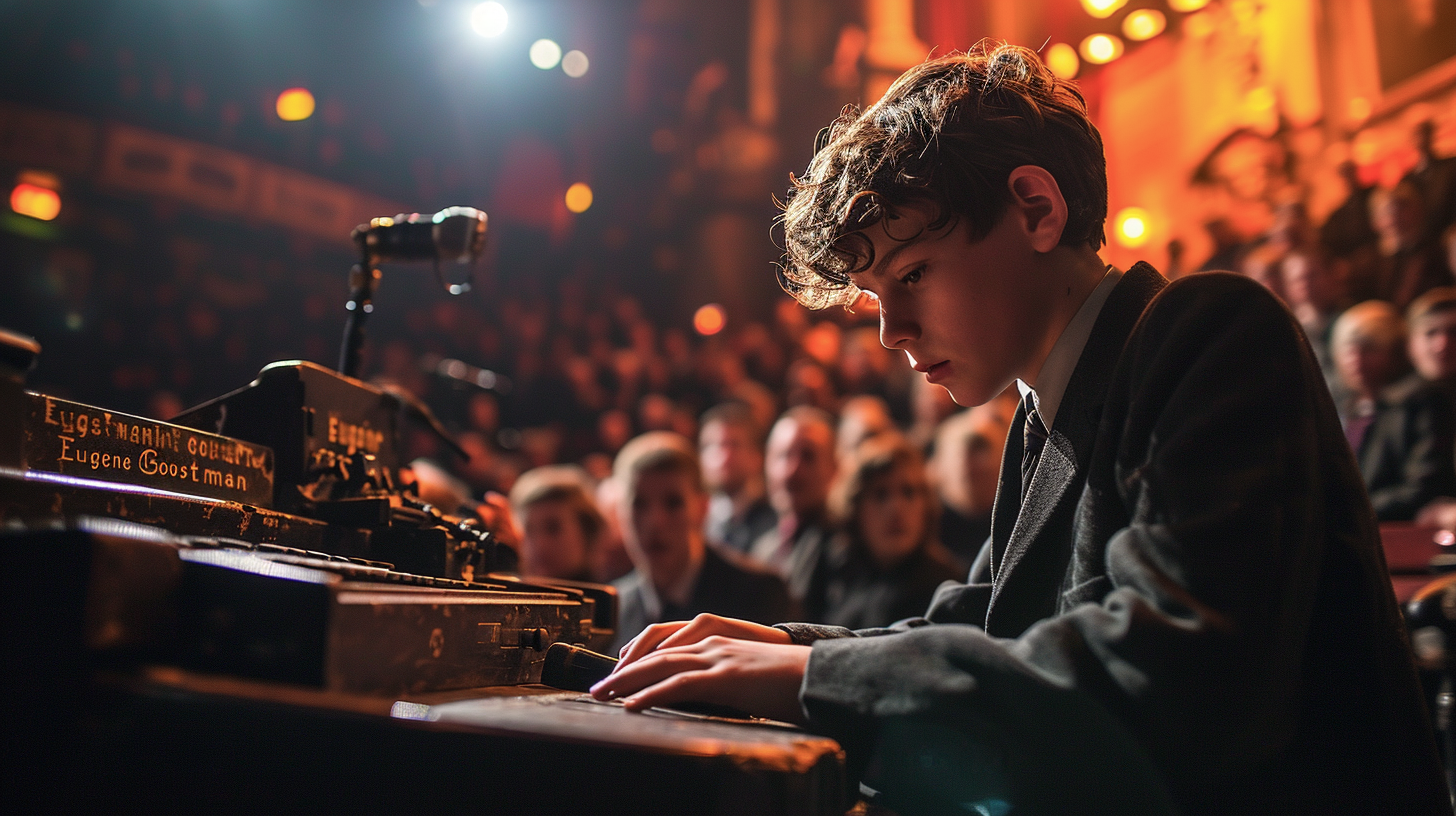
"In the 2014 Turing Test Competition, the program "Eugene Goostman" passed the Turing test: 33% of the interrogators believed that it was a 13-year-old boy from Ukraine." Generated on Midjourney, by Yan Zhang.
Here we explain why this 33% ratio is important. In his original paper "Computing machinery and intelligence", Turing also gave a famous prediction: that by the year 2000, computer programs will be advanced enough that the average interrogators will not exceed 70% chance of correctly guessing whether they were talking to a human or a machine.
Here, the organizers of the competition regard Turing's prediction as a criterion for a program to pass the Turing test, and interpret "no more than 70% chance" as requiring more than 30% of the interrogators to be "fooled" by the program.
From the late 1950s to the late 1960s, it was the first 10 years of AI's vigorous development. Scientists were full of confidence in AI. AI research based on formal logics led by John McCarthy has made important progress. The "Advice Taker" program he developed became the first common-sense reasoning system. In addition, the "General Problem Solver (GPS)" developed by the Carnegie Mellon University research group led by Herbert Simon (1916 - 2001) is a more widely used intelligent reasoning system.
These early AI research results greatly inspired most AI and computer scientists at the time. In 1965, Herbert Simon made a new AI prediction that was bolder and more specific than Turing's prediction in 1950:
"Machines will be capable, within twenty years, of doing any work a man can do."
Although the AI development entered its long winter period from the mid-1970s, and Herbert Simon's unfulfilled prediction has been questioned, however, this prediction has a clear expression of the belief of most AI scientists: eventually machines will be able to do anything humans can do!

“An AI symposium in 1985. Researchers were having a heated debate on how AI should be developed.”
Generated on Midjourney, by Yan Zhang.
Mini AI knowledge: John McCarthy (1927-2011) is known as one of the founders of AI, a former professor at Stanford University and a Turing Award winner. He has devoted his life to advocating formal logics based research methods in AI. In more than 20 years after 1980, the knowledge representation and reasoning he led became the mainstream of basic AI research, and some of the most important AI reasoning problems were able to obtain major results during this period.
Herbert A. Simon (1916 - 2001) is the only scientist who received both the Turing Award and the Nobel Prize (Economics), and is a former professor at Carnegie Mellon University. In the field of AI and computer science, in addition to his contributions to GPS, Simon also collaborated with Allen Newell (1927-1992, one of the collaborators of GPS and a winner of the Turing Award) to propose a theory that uses production rules to model human problem-solving behavior.
Part II: The Research and Development of Generative AI
will be published next Friday.
 |
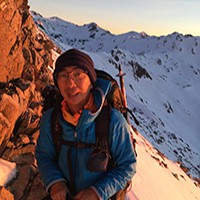 | Yan Zhang CREW Dear Friends, thanks you for reading this article and providing your comments here. Yes, this is a big and difficult topic that we all have to face it. I am heading to the mountain, will come back to read through your feedback in couple of days. |
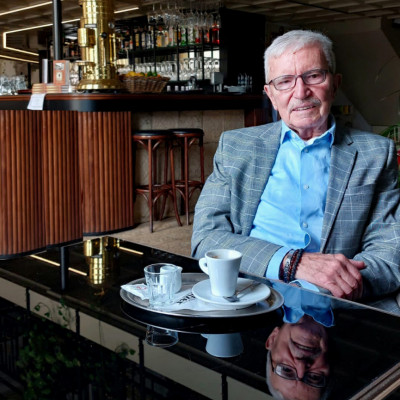 | Miro Susta CREW This is a difficult topic and am afraid to spread my opinion on it.
I'm not an artist, I'm only an engineer, I can imagine that AI may drastically change engineering work in near and far feature, but if AI starts changing photo world, then I stop buying photo books, attending photo exhibitions, visiting photo platforms.
Imagine that you using AI, for example Midjourney, then write car-flower-girl and AI create beautiful picture, how to link this to photography work, it is just cheating,
I sincerely hope that 1x photographs are keeping hands away from AI.
Many 1x magazine readers might not accept my comment but this my sincere opinion. |
 | Gabriela Pantu PRO Dear Miro, you are right, 1x is a refined photography platform and I like it that way. But Udo noticed, and I noticed too, that there are published and award-winning images that are not entirely photographs. That's why I said artists shouldn't post images as photos if they aren't. It is a matter of moral conduct. Not everyone can distinguish AI elements, especially when applying flowery or embossed textures, but it's always obvious to me because I'm familiar with AI.
That's why I said that the presence of AI creations or with AI elements on 1x, wouldn't be a problem if there was a dedicated section. But for now, although it does not exist, AI has infiltrated due to the lack of ethics of some artists. Given the extremely large number of images that need to be curated, it is almost impossible to filter all images that have AI elements. |
 | Miro Susta CREW I was reading your comments to this subject dear Gabriela, I understood that this is not simple issue and fully agree with your proposal. Many thanks for your contribution to this subject, wish you a very nice week. |
 | Gabriela Pantu PRO Always a pleasure, dear Miro, thank you too and I also wish you a wonderful week |
 | Bole Kuljic PRO This is a great topic and applaud the editors on this.
I appreciate Udo's and Gabriela's take on AI and photography. AI is here to stay and probably will make some other form of artistic expression. And that's fine. As long as we distinguish between the two and make it transparent. I, too, believe that most of the awarded photographs at 1x have some form of AI incorporated. Why not have two categories: one AI-augmented and one," raw", conventional photos edited with just basic Fs functions? thinking out loud. |
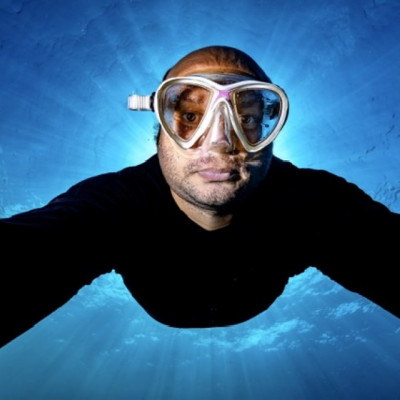 | Serge Melesan PRO Interesting article |
 | Gabriela Pantu PRO Thank you for this very interesting and necessary (in my opinion) article and congratulations dear Yan and dear Yvette! <3 <3
Now is a time where AI has become a tool within anyone's reach, just as the camera once did, and so I see no limitation in how we can use it to enable a higher expression of artistic vision.
AI is a powerful tool, and like almost any tool, it can be used for both good and bad reasons.
Even if a 'photographic' image created by AI looks amazing, at this point in the development of this tool, it is clearly not an image captured by the camera.
Even in the images that illustrate this article, which are great, very complex, you can see the AI's inability to control light, render eyes, hands, etc., but this doesn't bother me at all because it's an AI creation, not a photo, so I apply different criteria to evaluate it.
As Udo said, on 1x there are a lot of award winning images that are completely AI made or incorporate AI elements/objects.
For example, I noticed a method of blurring the presence of AI elements by overlaying photographed flowers as textures over AI portraits, but the eyes/hands are faulty in them. Additionally, lights and shadows always create a problem in AI creations. It can be fixed in Ps, but not perfect.
So, don’t call it photo if it isn’t.
The presence of AI creations or with AI elements on 1x, wouldn't be a problem if there was a dedicated section.
Without it, I think over time the site might suffer a lack of credibility, given that it is solely dedicated to photography and at this moment on the site photography coexists without problems with AI creations.
I make AI creations, so I'm familiar with the subject.I also created triptychs from my photos, including the photo I processed with AI in each triptych, but I did not post such images on 1x because the final image is not just a photo.
I can tell you that a series of my triptychs won an honorable mention at BIFA last year, so AI's creations are recognized and awarded in dedicated sections of international photography competitions.
At BIFA 2023 I won silver and bronze for my black and white photography, but I was happier for the honorable mention because I worked for the whole collection of 15 triptychs for almost a year, to control the AI tool and be its boss, so to speak.If you want to see which is my approach,
https://budapestfotoawards.com/winners/social/2023/93-29764-23/1703161186/?fbclid=IwZXh0bgNhZW0CMTAAAR12nCxwucVFnaxjphRlrklewMCyroBkh7ssi9FxrgI34nuu-9FLHBLjZ4A_aem_AQmYc-60rBUfmxuGM6or8QHCBnoe3PqBRhrkrnQqGweFhHDXG4WbAUFLjWHquy2euwbhmacGVWQlJ-wO5y-OApUc
I strongly believe that photography remains a type of creation whose status will not be challenged.
Painting didn't disappear after photography, photography didn't disappear after AI entered the world. And it came a long time ago, now it's within everyone's reach.
Art forms simply coexist and document reality and fantasy with their own means. I don't think art today is better or worse than art in the past. Instead, I believe that different art forms and mediums of expression coexist without hierarchy, mirroring society in all its complexity throughout history.
|
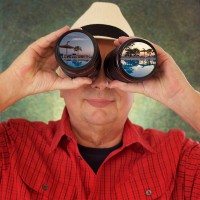 | Udo Dittmann PRO Your Metamorphose is great - love it! |
 | Gabriela Pantu PRO Dear Udo, thank you so much, means a lot! Very happy for your kind words! : D |
 | Udo Dittmann PRO From my point of view, photography will not die, even if many people will use AI to create photographic works in the future - I am even convinced that AI has already been used today for awarded photos here at 1x.com ... and all this unnoticed by the curators.
I would like to leave aside the problems of AI in relation to copyright and the possibility of creating realistic photos for FakeNews - this will have to be regulated across national borders in the future.
Nevertheless, I believe that we have to face up to the new medium, because it makes no sense to bury our heads in the sand, Vogel Strauss-style. Many photographers come straight out with holy water and would prefer to banish AI to a dark corner.
But I don't think that's right, because AI also means progress in many ways and you can't stop it.
Back to why photography will not die: Creating photos with AI is fun at first - I've already tried it out for myself privately. But creating a photo with a camera, where you sometimes have to go to a lot of trouble to capture the perfect moment, is much more satisfying, because you have created the photographic work yourself!
Udo Dittmann |
by Yvette Depaepe
Published the 8th of May 2024
Looking fore something surreal? 'Playing with mirrors'... Since mirror shots have a high tendency of being casual and repetitive, telling a story with yours would be quite creative. Using many mirrors at once, broken or not, can take photographs to the next level, as you get to capture multiple reflections of the subject.
The submissions were excellent and most creative.
The winners with the most votes are:
1st place : Andy Bauer
2nd place : Emine Basa
3rd place : Lynn Grant
Congratulations to the winners and honourable mentions and thanks to all the participants in the contest 'Playing with mirrors'
The currently running theme is 'Self-portrait'
Don't settle for a quick selfie when creating a self-portrait. Part of establishing is showing people who you are. An audience that connects with an artist is more appreciative of his or her work. Since we human beings are visually oriented, a shot of yourself is one of the most important ways you can make yourself visible to others.
This contest will end on Sunday the 19th of May at midnight.
The sooner you upload your submission the more chance you have to gather the most votes.
If you haven't uploaded your photo yet, click here.
Good luck to all the participants.

 by Martin Fleckenstein
by Martin Fleckenstein


 |
 | Gabriela Pantu PRO Warm congratulations to the winners and participants, such an amazing diversity in approach, so inspiring! <3 |
by Marc Apers
Edited and published by Yvette Depaepe, the 6th of May 2024
MISSING IDENTITY ... is the title of my latest exhibition hold in Antwerpen - Ruimte 34 the first week of May.

All images have one thing in common: people everywhere are consciously or suggestively present in one way or another, but they are always as good as (individually) unrecognisable.
You therefore only get to see an object related to a person, a fragment, a contour, or a shadow of a figure, in any case, a person without a clear face and any form of eye contact.
The latter used to be indispensable for me, so my portfolio then also consisted of very penetrating and frontal portraits.
Gradually, however, I started to observe ore and more that people prefer not to come into the picture and would rather hide in fear. What is going on?
On the one hand, modern people are becoming oversaturated via social media with intrusive images that change very quickly, mainly to reassure each other or tot show how fantastic or how horrific it is...
On the other hand, people do not want an intrusive portrait; it only remains with a 'selfie' or a 'Tik-Tok' reel.
One constantly switches between "'hiding oneself' and putting oneself in the spotlight... Just as I, psychologically and age-related (I'm 64 years old), develop integrity or despair...
As a photographer, however, I don't want to give in to the upheaval that goes on socially and individually. By the way, true identity arises from doubt and not from the cloning of an image. My personality is currently typified by a roller-coaster of ever changing emotions: often joyful and candid and then lonely and closed, ambitious versus lazy, calm and then fearful, optimistic versus defeated, infected or uncontaminated in and by the corona pandemic, alive and well in these times referred to as 'borderline'.
I want to resist the growing discomfort by looking for a new typology within my visual language.
I am ambitious. After all, a photographer, just like a painter or a writer, wants to be a conduit, a medium. This is what I want to do in an aesthetically responsible way, namely, help the viewer look more attentively by focusing on details or the unfilled, and without wanting to lead him too much, providing a gateway to a seeing...
No real or perceived identity is fixed, but the viewer can ask questions, invent a story, give it an identity, and reflect on one's identity. Images are not reality, they are a gateway to reality, neither more nor less.
Here's a compilation of some images exposed recently.
 'Looking for Blue Skies'
'Looking for Blue Skies' 'Bathroom Stories'
'Bathroom Stories'


 'Fading Memories'
'Fading Memories' 'Dark Figure'
'Dark Figure' 'Burning Flame'
'Burning Flame' 'No Way Out'
'No Way Out' 'Shadow of a stranger'
'Shadow of a stranger' 'Summer Breeze'
'Summer Breeze'
 'The Future Looks Green'
'The Future Looks Green'
 'Fading Figure'
'Fading Figure' |
 | Gabriela Pantu PRO A splendid exhibition that metaphorically mirrors the complexity of the human dimension on a dynamic stage, real and fabulous at the same time, which allows you to immerse yourself in the stories and also to interpret them personally.The statement reflects the vision and the images emerge from the substance of the statement with force.Warm congratulations and thank you for sharing, dear Marc.A delight!Thank you, dear Yvette! |
 | Marc Apers CREW Many thanks Gabriela! |
 | Oliver J. Holy PRO excellent images, great work |
 | Marc Apers CREW Thanks a lot Oliver |
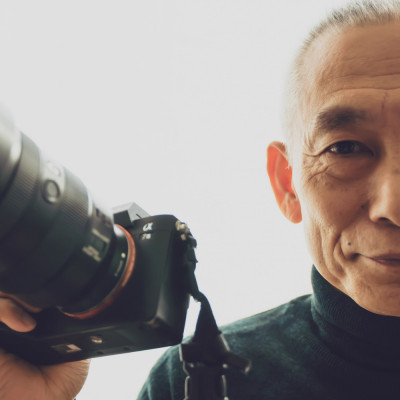 | Great work with excellent collections!! |
 | Marc Apers CREW Many thanks my friend |
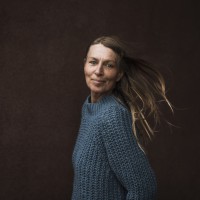 | Heike Willers PRO Wonderful exhibiion, great collection and work! Thank you for sharing - and my very best compliments! |
 | Marc Apers CREW Glad you like it Heike, thanks a lot |
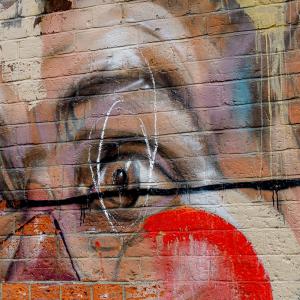 | Chris Hamilton PRO Great project and idea, excellent images. |
 | Marc Apers CREW Many thanks Chris |
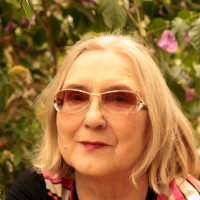 | UstinaGreen PRO A wonderful collection of conceptual Works!! Many best compliments and congrats) |
 | Marc Apers CREW Thank you so much Ustina |
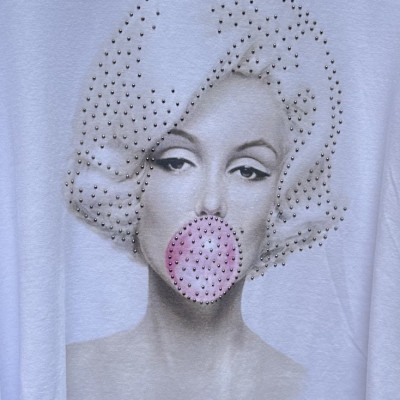 | Per Urmann PRO Great Works, wonderful exhibition. Well done! |
 | Marc Apers CREW Thanks a lot Per |
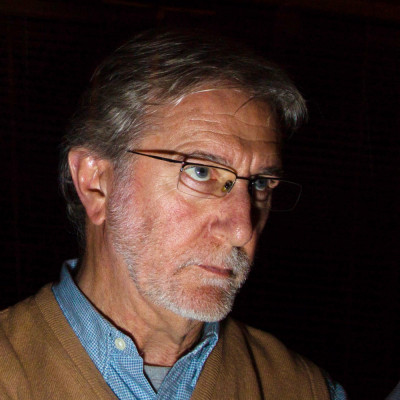 | Manuel Gayoso PRO Such a wonderful exhibition Marc! The omnipresence of people but without revealing their intimacy, suggesting but not telling the personal stories. Congrats!! |
 | Marc Apers CREW You have fully captured the message, which gives me great pleasure, thanks a lot Manuel! |
 | Yvette Depaepe CREW A few typos ... corrected! Sorry Marc and many congratulations. Outstanding concept and strong images. Cheers, Yvette |
 | Marc Apers CREW Thanks again for visiting my exposition and appreciation Yvette |
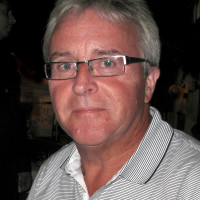 | Eric Mattheyses PRO A splendid exhibition with content. Congratulations again, Marc. |
 | Marc Apers CREW Many thanks Eric! |
 | Very interesting work and appropriate (right word?) for the current social trends. Raises a question, what will become of street photography? |
 | Marc Apers CREW Thanks a lot Francisco, i ask myself the same question |